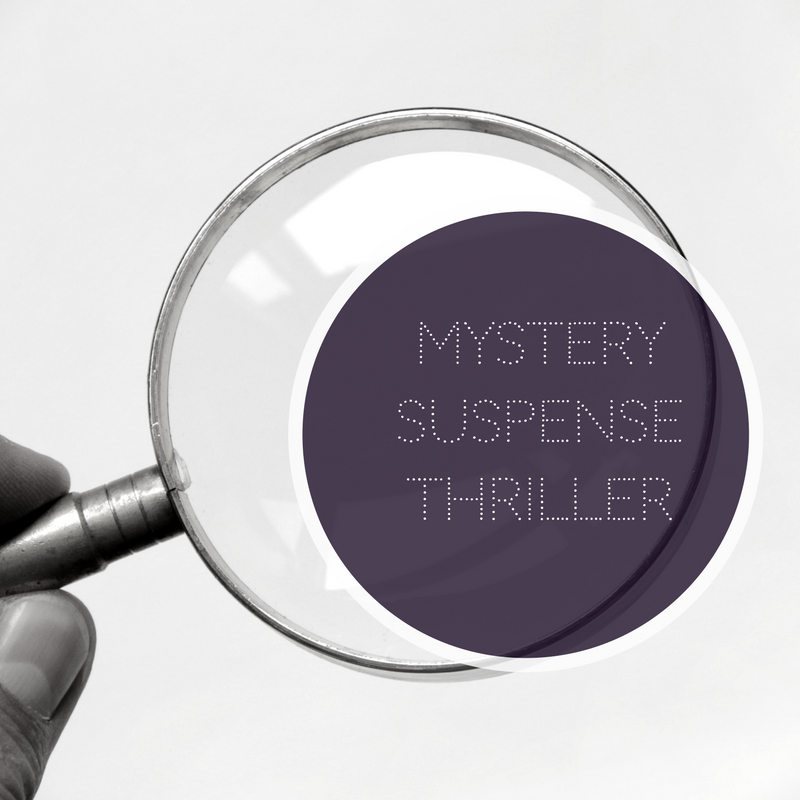Are you writing a mystery or a thriller? Do you know how to tell the difference between suspense, thriller and mystery subgenres?
The three categories are related and often overlap. Mysteries often have elements of suspense and a thriller may involve a mystery.
However, experts advise writers to identify the primary subgenre before pitching a manuscript. A story may be clearly in one genre, or straddle two, but it can’t be all three.
The following descriptions will help you determine which category fits best.
A mystery is about solving a crime or a puzzle. The protagonist’s goal is to uncover the clues, solve the mystery and bring the antagonist to justice. Typically, the crime happens near the beginning of the story the identity of the antagonist (murderer) is not revealed until the end. See a list of common mystery subgenres below. Examples include Agatha Christie, Murder She Wrote and Psych.
A suspense novel is about suspense. The reader knows the protagonist is endangered from the start, but the protagonist may only gradually become aware of the danger. The suspense genre covers everything from romantic suspense to psychological suspense and horror. Examples include Nora Roberts, Lynette Eason and Alfred Hitchcock movies.
A thriller is about action and danger. The protagonist’s goal is to stop the bad guy’s evil plan from succeeding. The protagonist and/or others are in danger from the start. Thrillers come in a wide variety of subgenres, including: espionage, political, legal, eco-terror, disaster, treasure, and sci-fi. Big names include Tom Clancy, John Grisham, and Clive Cussler.
Common mystery subgenres
Amateur Sleuth—the protagonist is not a P.I. or employed in law enforcement, and he or she does not get paid for solving the crime. Examples include Dorothy Sayers and the Hardy Boys.
Cozy—clever sleuthing without the gore, violence or naughty words. Miss Marple is a classic example. Modern cozies often feature a theme like cats (Lillian Jackson Braun) or cooking (Diane Mott Davidson).
Hard-boiled/Noir—crime fiction with a dark tone, plenty of gritty brutality, and tough-guy protagonists. Most definitely not cozy. Dashiell Hammett and Raymond Chandler are classic examples.
Historical—a mystery set in the past. The sleuth may be an amateur, a PI or a policeman. Examples include Anne Perry, Elizabeth Peters, and Miss Fisher’s Murder Mysteries.
Legal/Medical—the protagonist is a lawyer or doctor and the plot revolves around details of that profession. Usually written by medical or legal professionals. Big names include Lisa Scottoline and Robin Cook.
Police Procedural—the protagonist is a law enforcement professional, the solution involves detailed investigative techniques, and the story is more about proving guilt than discovering whodunit. Think CSI or Law and Order.
Private Investigator/Private Eye—the protagonist is a professional rather than an amateur sleuth. Like the police, solving crimes is how they earn their living. Think Sue Grafton, or The Rockford Files.
Psychological Suspense—these crime novels explore psychological issues, and typically feature a protagonist who is a psychologist or psychiatrist. Gillian Flynn and The Silence of the Lambs.
Romantic Suspense—a female protagonist is in danger, often while trying to solve a crime. In the end justice prevails and true love wins out. Authors include Terri Blackstock and Colleen Coble.




No Comments